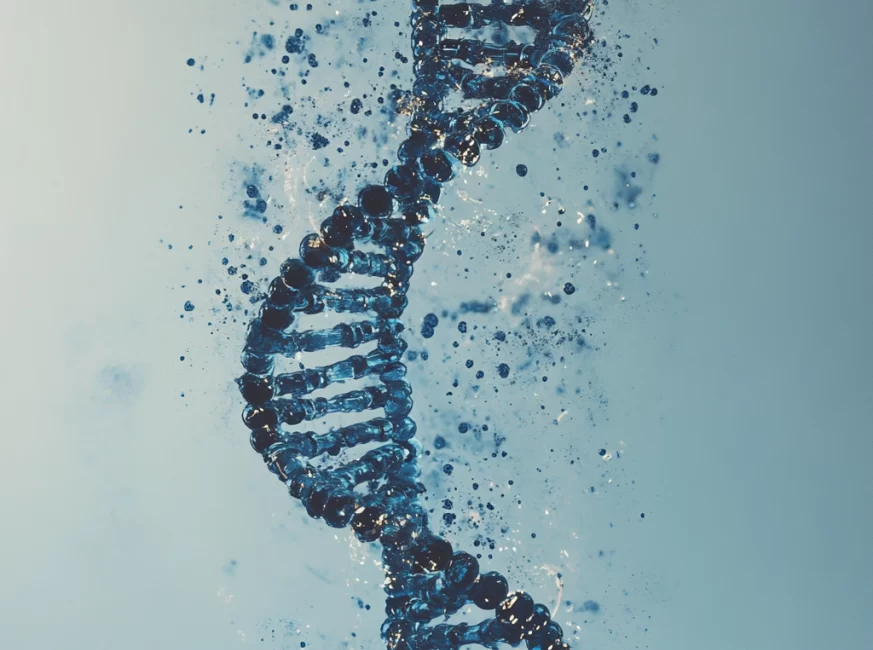
Streamlining Tissue DNA Extraction: Challenges, Considerations, and Advances in Homogenization Technology
DNA extraction from tissue remains a foundational step in molecular biology, diagnostics, and biotechnology. While the core principles of nucleic acid isolation haven’t fundamentally changed in decades, the tools and workflows surrounding this process have evolved significantly—driven by the need for higher throughput, reproducibility, and sample integrity.
For scientists and lab professionals with deep experience in genomics workflows, the challenges of tissue-based DNA extraction are well-known: mechanical toughness of certain sample types, risk of nucleic acid degradation, inconsistent yields across replicates, and time-consuming manual processing. These issues are magnified in clinical, agricultural, or pharmaceutical settings, where sample volume and variability can be considerable.
In this post, we’ll revisit key considerations for DNA extraction from tissue, with a focus on mechanical disruption techniques and how recent innovations—particularly in bead-based homogenization—are reducing the variability and inefficiency that long plagued this critical step.
The Central Role of Tissue Disruption in DNA Purification
Effective tissue homogenization is the cornerstone of any robust DNA extraction protocol. Without consistent and complete cellular disruption, DNA yield and quality can vary significantly—not just between sample types, but between replicates of the same tissue. Fibrous or lipid-rich tissues such as muscle, brain, liver, and skin pose particular challenges due to their mechanical resilience and biochemical composition.
Traditional mechanical methods, including mortar and pestle grinding in liquid nitrogen, rotor-stator homogenizers, or manual mincing, offer variable levels of disruption and are highly operator-dependent. While acceptable for low-throughput applications or specialized contexts, these techniques often introduce variability that’s incompatible with modern molecular workflows that demand reproducibility, especially in regulated or high-stakes environments.
Bead-Based Homogenization: A Paradigm Shift
Bead-based homogenization has gained traction as a gold standard for tissue disruption in DNA extraction workflows. The underlying principle—subjecting samples to rapid agitation with beads of defined size and composition—provides a high degree of uniformity in tissue lysis, especially when used in conjunction with automated or semi-automated platforms.
The Bullet Blender® from Next Advance exemplifies how this approach can be refined for consistency, scalability, and ease of use. By precisely controlling agitation speed, duration, and bead parameters, the Bullet Blender delivers reliable homogenization across a broad range of tissue types—all without requiring sample cooling baths, constant operator supervision, or complicated setup.
This level of standardization is particularly advantageous in high-throughput settings, where hundreds or thousands of tissue samples may be processed per week, and in applications where sample conservation is critical.
Key Considerations in Selecting a Homogenization Platform
Experienced lab professionals evaluating homogenization solutions for DNA extraction should consider the following performance criteria:
- Reproducibility
Automated bead mill homogenizers minimize human variability. The Bullet Blender, for example, ensures that all samples receive identical agitation forces and durations, which directly impacts DNA yield and integrity.
- Sample Throughput
Manual homogenization methods bottleneck downstream workflows. A high-capacity homogenizer with multi-sample capability increases efficiency and reduces operator fatigue.
- Cross-Contamination Control
Closed-tube homogenization, as implemented in the Bullet Blender, virtually eliminates the risk of cross-sample contamination—a critical concern in molecular diagnostics, forensic analysis, or when working with infectious materials.
- Thermal Management
Overheating during tissue homogenization can degrade DNA. Many traditional devices lack adequate thermal control, whereas the Bullet Blender’s dry, no-cooling-block-required design minimizes heat generation, preserving nucleic acid integrity without requiring cumbersome liquid nitrogen workflows.
- Compatibility with Downstream Extraction Kits
The homogenization step must be seamlessly integrated with downstream lysis buffers and DNA purification protocols, whether spin-column based, magnetic bead-based, or automated systems. Properly disrupted tissue should be amenable to virtually any DNA extraction chemistry, maximizing workflow flexibility.
Application Highlights: From Bench to Biobank
The implications of improved tissue homogenization go far beyond the benchtop. Laboratories involved in clinical research, biobanking, veterinary science, and agricultural genomics all benefit from more consistent DNA extraction protocols.
In biobanking applications, where thousands of archived tissue specimens must yield high-quality DNA for longitudinal studies or genomic surveillance, consistency is paramount. The use of standardized bead-based homogenization minimizes sample-to-sample variability and simplifies data interpretation.
Similarly, in translational research and pharmacogenomics, where genomic data guide therapeutic decision-making, ensuring DNA of sufficient yield and integrity is non-negotiable. The risk of sample failure due to poor homogenization can derail entire studies or introduce costly delays.
Tissue Type Matters: Optimizing for Specific Challenges
One of the strengths of the Bullet Blender system is its versatility across diverse tissue matrices:
Muscle and Heart: These dense, fibrous tissues require high-energy disruption. Stainless steel or zirconium beads combined with appropriate Bullet Blender settings can rapidly break down these samples without smearing DNA.
Liver and Brain: Soft, lipid-rich tissues are prone to emulsification or poor lysis in some protocols. The Bullet Blender accommodates these challenges by allowing fine-tuned control over agitation parameters and bead types.
Skin and Cartilage: Tough connective tissues often resist standard homogenization. Bead-based disruption paired with extended processing times can overcome these barriers efficiently.
For more specific protocols and guidance by tissue type, visit Next Advance’s application page on DNA extraction from tissue, which offers detailed tips for optimizing homogenization settings, bead selection, and compatible lysis buffers.
Final Thoughts: Refining the First Step in Genomics
DNA extraction may be a routine protocol in many laboratories, but its importance can’t be overstated—particularly in workflows where data quality, reproducibility, and regulatory compliance are essential. Tissue homogenization remains the most variable and error-prone part of the process, but it doesn’t have to be.
Advanced homogenization platforms like the Bullet Blender are transforming how scientists approach this step: automating what was once laborious, standardizing what was inconsistent, and enabling DNA purification protocols that are faster, cleaner, and more reproducible.
For life science professionals who have spent years troubleshooting tissue prep, switching to a more reliable homogenization method isn’t just a convenience—it’s a competitive advantage.












